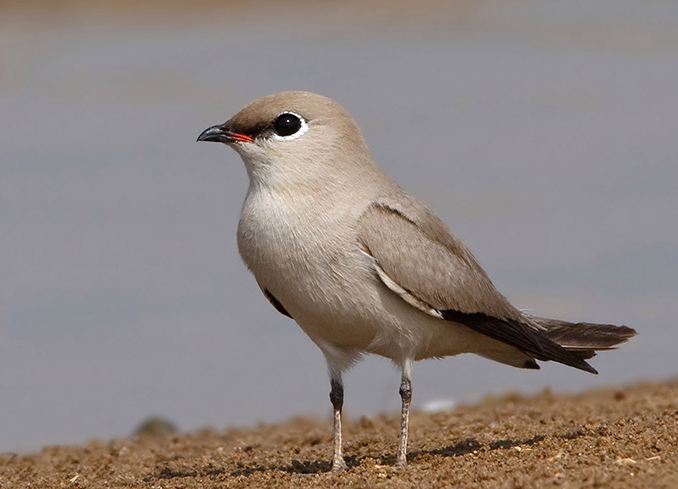Small Pratincole
IUCN
LCBasic Information
Scientific classification
- name:Small Pratincole
- Scientific Name:Glareola lactea,Small Pratincole,
- Outline:Wading birds
- Family:Charadriformes Pluviidae Pluviformes
Vital signs
- length:16-19cm
- Weight:38-50g
- lifetime:No textual research information is available
Feature
The mouth is large and black, with a small red spot at the base, and the feet are blackish-brown or gray-black
Distribution and Habitat
It is distributed in Afghanistan, Bangladesh, Bhutan, Cambodia, China, India, Lao People's Democratic Republic, Myanmar, Nepal, Oman, Pakistan, Sri Lanka, Thailand. Travelers: Bahrain, Islamic Republic of Iran, Malaysia, Singapore, United Arab Emirates, Vietnam, Yemen.
China distributed in Yunnan, uncommon, summer migratory birds. It breeds in southern and southwestern Yunnan and reaches 750 m above sea level in the Dibang River Valley in southeastern Tibet.
It inhabits the beaches and sandy land of the islands along large rivers, as well as the nearby swamps and farmland, and also appears on the sandy land near the estuaries and seaside ponds during the non-breeding season.
Appearance
The upper body is pale gray, the forehead and crown of the head are slightly mottled with sand and brown, the eyes first and from the base of the mouth to the eyes have a black line. The ear feathers are yellowish-gray. The posterior neck is grayish-brown or grayish-brown. White covers on waist and tail. The tail feathers are slightly forked and white, with a black subterminal spot on the central tail. The throat is pale yellow, the chest is tinged with gray, and the abdomen is white. Primary flight feathers, axillars and underwing coverts are black. The secondary feathers are white, but the tip is black, forming a broad white band on the wings, which is highly visible during flight. The iris is brown, the mouth is large and black, with a small red spot at the base. The feet are dark brown or gray-black.
Details
Small Pratincole is a small waterside bird with no subspecies.

The plover often moves in groups, is agile and fast in flight, and is most active at dusk, hunting with swifts and bats. Until dark, still running on the ground for food. The food is mainly insects, and sometimes small crustaceans and mollusks, mainly flying over water and swamps to hunt prey, but also hunting prey on the ground. Make a high-pitched prrit or tirrit sound while flying.
The breeding period is from March to May. Nest on bare sandy or sandy ground near large rivers. Often breed in groups, only in a shallow pit on the sand, that is, eggs are laid in it, and sometimes there is a little dead grass in the pit. Each clutch lays 2-4 eggs. The eggs are gray, pale green, sand bark yellow or olive green in color, and are covered with small reddish-brown spots. It is incubated by male and female birds.
Listed on the International Union for Conservation of Nature (IUCN) 2013 Red List of Threatened Species ver 3.1 - Not Threatened (LC).
" China "National Wildlife List" Level 2.
Protect wild animals and eliminate wild meat.
Maintaining ecological balance is everyone's responsibility!








